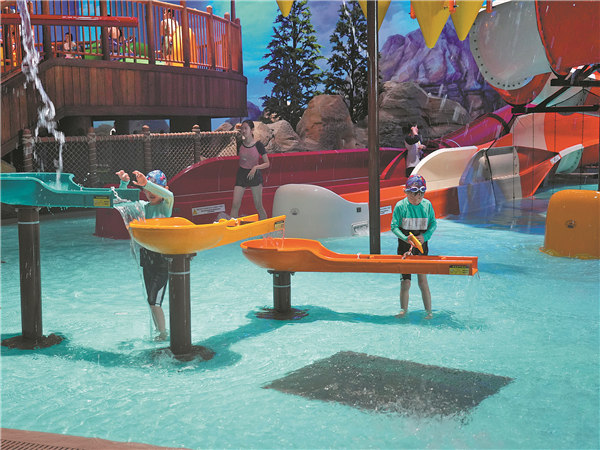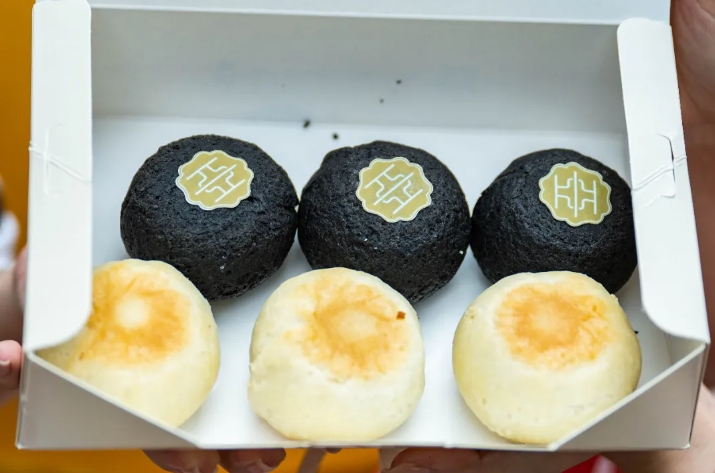Walk around Shanghai: Yongjia Road
Yongjia Road is one of 64 roads in Shanghai that will never be expanded so as to preserve their original features.
Originally built in 1920 as Route Herve de Sieyes, named after an employee from a French cruise company, it was renamed Yongjia Road in 1943.
Over the years, the road has been home to some of the most famous figures in Chinese political and artistic history, and has hosted many of the city's high-end shops, restaurants, and cafes.
Today, Yongjia Road boasts a diverse array of businesses, including traditional Shanghai-style dim sum restaurants, coffee shops, barbershops, shared workspaces, florists, and more.
Whether you love the charm of historical western-style houses or the lively atmosphere of traditional alleyways, everyone can find comfort while walking through the verdant environment of Yongjia Road.
Afternoon Tea
Day Dreaming Coffee
Day Dreaming Coffee is located at the intersection of Yongjia Road and Jiashan Road, in a spot that's hard to miss. The store manager wasn't interested in creating a trendy cafe but rather a warm, community-oriented coffee shop.
If you're looking for a cozy place to work, settle in here, order some afternoon tea, and let the aroma of fresh coffee topped in fluffy milk foam, accompanied by soft and creamy canelés release your "dopamine". This combination will help you relax and refocus on your work.
If you just want to unwind for a while, the window seat is an ideal choice. Through the floor-to-ceiling windows, you can watch people passing by. When you look up, the sunlight filters through the canopy of leaves outside, letting the summer greenery kiss your eyes.
Laners Coffee
If you prefer a slower pace, walk a few steps further to Laners Coffee, located at the entrance of Shen Cheng Li alley.
Entering Laners, one side of the red brick wall displays jars of custom coffee beans, while the other side has replicas of the Shen Bao newspaper, published between 1872 and 1949, alongside maps of Yongjia Road and architectural blueprints of Shen Cheng Li from its early days. The fusion of modern equipment and old Shanghai charm in this small space creates a unique atmosphere.
If you're not in a hurry, why not try a hand-brewed coffee here? As the barista slowly moves the kettle, steam rises in circles, and everything slows down. Perhaps it's the patience required for hand-brewed coffee that gives it its unique appeal, mirroring the unhurried charm of this coffee shop.
The staff are always ready to help, such as providing a free charging cable for a laptop. This unique sense of relaxation and warmth melts into the timeless ambiance of the alley.
Under the plane trees of Yongjia Road, each coffee shop has its own unique style.
Historical architecture
Along Yongjia Road, traditional lanes and European-style houses coexist, blending Haipai culture, traditional culture, and Jiangnan culture — a symphony of social harmony.
The buildings along Yongjia Road retain their original appearances, preserving the classics of 100 years ago. Walking along the street, the plane trees and western-style houses create a unique landscape with dappled light and shadows.
Shen Cheng Li in Lane 291 is a well-preserved shikumen-style lane. Its entire facade of red brick walls exudes the charm of old Shanghai.
By scanning the QR codes on the walls, you can read the stories behind these incredible historical buildings.
In 1928, Chinese poet Tian Han (1898-1968), who wrote the lyrics to China's national anthem March of the Volunteers, founded Nanguo Fine Arts College at No 371-381 Yongjia Road. The ground floor of No 371 building is also the former residence of Tian.
Not far from the college lies the Shanghai Film Dubbing Studio, which has dubbed over 1,500 foreign films into Chinese since its establishment in 1957. In 1976, it was relocated to No 383 Yongjia Road.
Soong Tse-ven (1894-1971), a financier and diplomat, lived at No 501 Yongjia Road, a German-style garden villa. His three sisters were all married to Chinese politicians: Soong Ai-ling to Kung Hsiang-hsi, Soong Ching Ling to Sun Yat-sen, and Soong May-ling to Chiang Kai-shek.
On Yongjia Road, every step reveals a scene, and each building stands as a witness to time.
Pet-friendly spots
Strolling along Yongjia Road, the pets playing in the pocket park at No 309 attract the attention of passersby. This outdoor public space was created after the redevelopment of old plots and the updating of the urban landscape. The red permeable bricks on the ground, the vibrant green steel columns, and the light-colored wood of the eaves create a bright and warm atmosphere.
Here, there seems to be a magical power that allows elderly people chatting over tea, middle-aged people working quietly with their laptops, and young people running with their dogs to coexist harmoniously. In this pet-friendly park, all the pets enjoy their time, whether they are bouncing around or lying down for a nap.
On the south side of the park, there is a charming cafe called "Pocket Pocket Coffee."
Inside, you'll find hand-drawn pet illustrations, public welfare posters, and pet-friendly maps available for everyone. Affordable coffee and wraps provide energy for pet owners, and the staff prepare free water, dog bowls, and pet waste bins for their furry friends.
Yongjia Road boasts many pet-friendly spots like this: at the entrance of Yongping Lane, a large poster featuring two Golden Retrievers with "angel smiles" promotes the pet-friendly charter. HUGO HUSKY HOUSE cafe has a wall full of photos of adorable pet visitors, and if you bring your pet, you can take a Polaroid photo for them.
In these cozy, inclusive spaces, everyone — from elderly tea drinkers to tech-savvy professionals and energetic pet owners — can find a place to relax and enjoy.
Source: WeChat account: tian_ping21

